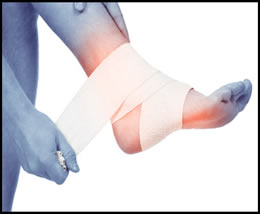THE DEBATE: ICE VS HEAT

Ice is used immediately after an injury occurs or if a pre-existing injury has been made worse. Generally, the first 24-72 hours after the injury, ice is recommended. Ice has several affects on the tissues of the body. Primarily, ice will cause the blood vessels to constrict (get smaller) and limit the amount of fluid that will flow to the area. This means that any inflammation that maybe going to the area, will be limited, thus decreasing the pain associated with it. Also, ice has a numbing affect which acts as a natural and mild pain reliever when used in moderation. Generally, recommendations of ice are given after a treatment to ensure that any inflammation that is caused from working the tissues is limited as soon as possible. Never place the ice pack directly on the skin and limit your icing time to 10-15 minutes or until the area is numb per hour. Heat is used several days after the injury has occurred. Heat has several affects on the tissues of the body. Primarily, heat will cause the blood vessels to dilate (get wider), thus increasing the amount of fluid and material that is transported by them. It also helps to relax and soften the tissues when they become tight. This means that several days after the injury has occurred and healing has started, heat will allow more blood and materials to be transported to and from the area to promote healing. Before one starts to stretch it is good idea, to do a few minutes of heat to warm up the area and get the muscles more ready to accommodate the stretches. Never place the hot pack directly on the skin. Monitor how hot it feels, if it feels too hot, remove it, do not burn yourself. Limit your heating time to 10-15 minutes every hour.
ICE
Ice is used immediately after an injury occurs or if a pre-existing injury has been made worse. Generally, the first 24-72 hours after the injury, ice is recommended. Ice has several affects on the tissues of the body. Primarily, ice will cause the blood vessels to constrict (get smaller) and limit the amount of fluid that will flow to the area. This means that any inflammation that maybe going to the area, will be limited, thus decreasing the pain associated with it. Also, ice has a numbing affect which acts as a natural and mild pain reliever when used in moderation. Generally, recommendations of ice are given after a treatment to ensure that any inflammation that is caused from working the tissues is limited as soon as possible. Never place the ice pack directly on the skin and limit your icing time to 10-15 minutes or until the area is numb per hour.
HEAT
Heat is used several days after the injury has occurred. Heat has several affects on the tissues of the body. Primarily, heat will cause the blood vessels to dilate (get wider), thus increasing the amount of fluid and material that is transported by them. It also helps to relax and soften the tissues when they become tight. This means that several days after the injury has occurred and healing has started, heat will allow more blood and materials to be transported to and from the area to promote healing. Before one starts to stretch it is good idea, to do a few minutes of heat to warm up the area and get the muscles more ready to accommodate the stretches. Never place the hot pack directly on the skin. Monitor how hot it feels, if it feels too hot, remove it, do not burn yourself. Limit your heating time to 10-15 minutes every hour.
Can ice and heat be used together?
As the injury begins to heal, (approx. 5 days after injury), ice and heat can be used together as a contrast therapy when stretching and rehabilitating the tissues. This means that the patient will use heat first for approximately 5-10 minutes to soften the tissues, conduct their stretches and then ice the area for approximately 5-10 minutes. This will allow the muscles to relax and allow for a good stretch, then the ice will limit any inflammation that maybe occurring.